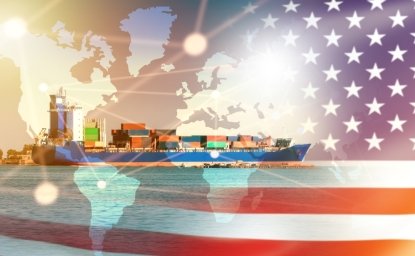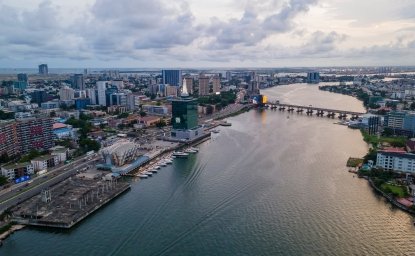The Economics of Financial Market Growth in the Middle East


With fits and shaky starts, economic liberalization in the Arab world is back on the agenda among many regimes and policymakers in the Middle East and North Africa (MENA). Nestled among those ideas is the extent to which capital markets can serve as the crucial accelerant to diversification. Liberalized and developed financial markets obviously cannot save crisis countries from instability, but for those MENA countries with histories of low, inconsistent, or shallow economic growth, facilitating capital flows to promising private-sector industries can help set the stage for sustained expansion and more inclusive economies.
Barely a week goes by without a story touting the introduction of a new economic initiative or financial product. The advent of Saudi Arabia’s nomination for possible inclusion in the MSCI Emerging Market index, the looming initial public offering of Saudi Aramco—touted as the largest IPO in history when it comes to pass—and the unprecedented issuance of corporate and sovereign bonds in recent years suggest the region (the Gulf Cooperation Council (GCC) in particular) is poised to accelerate its commitment to broad and integrated capital markets on par with some leaders in emerging markets. Indeed, less than two decades ago places like Dubai, Abu Dhabi, Doha and Riyadh boasted virtually no banks of global reach and stock markets of little importance to the domestic economy, much less to global investors.
The sustained softness of global oil prices has made economic diversification a necessity within the GCC—Bahrain, Kuwait, Oman, Qatar, Saudi Arabia, and UAE—no longer just a theoretical proposition. Notwithstanding the uprisings in the region since 2011, which have spawned a retching of civil wars, population displacements, and even localized famine, and which in all likelihood will set back those crises countries for at least a generation in terms of living standards and development, there is a reawakening of the need for reform and an examination of the factors that could help catalyze and sustain long-term growth.
An efficient and well-regulated financial sector stimulates savings, improves capital allocation, and has proved vital to helping produce and sustain high levels of economic growth.[i] It goes without saying that financial market liberalization in countries in the throes of violence and instability—Libya, Syria, and Yemen—is a distant if not unachievable prospect for decades. Nor should it be suggested that these countries follow the advice of advisers in Iraq, who just months after the U.S. invasion in 2003, set about reopening the Baghdad Stock Exchange amidst electricity shortages and looting in the country.[ii] For those enjoying relative stability, however, the development and deepening of their financial sectors can provide a positive feedback loop in the domestic economy. In addition, energizing local capital that feeds into job-creation can help these countries deal with proverbial economic challenges, such as the uncertainty of oil prices (for oil-exporting countries) and remittances and aid (for non-oil exporters).
Financial inclusion—defined as a population’s access to and use of financial services—is necessary to foster a growing financial-services sector and a key ingredient to reducing poverty and distributing economic growth. The GCC countries are without question the momentum in the MENA region toward more inclusive financial markets, but even there the evolution has been inconsistent. In other MENA countries, the ability of households and businesses to access capital for expenses or expansion is dismal.
According to the World Bank’s Global Findex database, the percentage of adults with an account at a financial institution as of 2014 was only 14 percent in the MENA region, an appallingly low number when compared with high-income countries where 94 percent of the adult population had an account with a financial institution. This rate is the lowest among all developing regions, and compares unfavorably with the average account penetration of the developing world at 54 percent. To be sure, there are striking disparities within the Middle East; 82 percent of adult Bahrainis held accounts with a financial institution, but only 27 percent in Tunisia held such accounts, and 14 percent in Egypt. Similarly, only a small fraction of Arabs receive their wages via the banking sector as the vast majority are paid in cash, a state of affairs that further undermines the incentive to keep savings in a bank that can be lent out to the private sector. More than 90 percent of Iranian adults by contrast held bank accounts, a situation driven almost entirely by the government’s subsidy reform plan in 2010 that required Iranians to hold a bank account to receive cash subsidy payments.
But even if the rate of bank-account penetration doubled across the region, what money is there for those savings accounts? Indeed, according to data from the Central Bank of Jordan, to take one example, the household debt-to-income ratio and household debt-to-wealth ratio have risen continuously since 2010, signaling a rise in credit risks as the growth of household indebtedness has outpaced the growth of income and net wealth. In 2015, the household debt-to-income ratio in Jordan was 69 percent, up sharply from 54 percent in 2010, a trend that almost certainly has continued to climb amid low growth and high unemployment. Jordan’s household debt-to-wealth ratio suffered even larger turns, rising to 60 percent in 2015 from 38 percent in 2010.[iii] The Jordanian government has recognized the importance of financial inclusion to reducing poverty, and the Central Bank has a financial inclusion strategy in place. The issue therefore is not one of plans but of means.
Savings provide a buffer against unexpected shocks, such as the death of a breadwinner, job loss, or political volatility. According to a World Bank survey, just 30 percent of adults in the Middle East in 2014 claimed to have saved any money, and only 4 percent used formal savings—the lowest in the developing world—placing millions of households at risk of sinking into poverty in a region battered by political instability. Why so little savings? Poverty is the driving factor. The World Bank noted that 77 percent of respondents cited it as a reason for not having an account, and 28 percent of unbanked adults identified poverty as the only reason, rates on par with sub-Saharan Africa.
Higher savings is crucial to financial sector development, but evidence suggests that more savings does not necessarily lead to increases in credit to the private sector, especially if those savings sidestep formal financial institutions. This is largely because savings in MENA countries often manifest outside financial institutions and therefore are not recycled to augment lending and investment.[iv] According to data from the World Bank, the number of adults who borrow from friends or family is more than five times the rate at which they borrow from financial institutions.
On top of that, most businesses in the Middle East are family-owned and run and generally rely on internal sources of finance.[v] Although certainly not systemic, this family-led approach to business has engendered a traditional reluctance to seek outside sources of finance, which can slow the development of financial markets as well as hinder economic expansion. This hesitation is clear with debt financing, but becomes even more pronounced with equity financing, which dilutes ownership.
Where do we go from here?
The current environment is not particularly conducive to broad and sustained economic growth, much less financial-sector development. The combination of regional instability and consistently low oil prices is undermining the spending power of households and regional banks and companies and tripping up the budgets of governments, making it extra difficult to foster higher savings and subsequently a financial sector. The average fiscal deficit in MENA oil exporters reached about 10 percent of GDP in 2015 and 2016, according to IMF data, and in April the IMF forecast GDP growth of less than 2 percent for MENA’s oil exporters.[vi] Its forecast for the region’s oil importers (which includes Afghanistan and Pakistan) clocks in at around 4 percent growth for the year, improvements on previous years, but insufficient to bolster savings in the region and corporate balance sheets.
Internationalization of finance markets and with it the risk of shocks have also trimmed enthusiasm. Market booms and busts driven by the proverbial animal spirits—and of course by the occasional Ponzi schemes and scandals—have certainly unnerved economic policymakers (and their populations) in emerging markets searching for reliable formulae of long-term growth. Particularly since the financial crisis that gripped many advanced economies in 2008-2009 and its echoes that slowed global growth in the years after, the drive to rapidly develop domestic financial markets dimmed. Although GCC stock markets in particular fared relatively better than the S&P 500 and the MSCI Emerging Market Index, major GCC stock market indices still fell sharply by 20-60 percent from early 2007 to the trough in 2008.
Governments in the MENA region have a poor track record of long-term economic planning. The slew of social, political, and economic crises in recent years have led officials (with some reason) to equivocate and prevaricate on economic reforms, in effect saying that once the crisis is over they can get back to planning. There are signs that these pretexts are giving way to more pragmatism. Regional governments have traditionally taken a heavy hand in managing their economies, whether acting as employers of last resort (where, for instance, the state employs more than 30 percent of working-age populations in Jordan and Egypt) or protecting sclerotic state-run companies from competition. Domestic banks across the region are generally heavily involved in holding the sovereign debt of their governments, which often limits the availability of credit to the private sector. Although not unique to the Middle East, powerful interest groups in these countries have resisted economic liberalization even as governments have taken steps to do so.
All is not lost, however, as governments can begin the process of strengthening the regulatory environment and instituting more transparency in corporate governance. In addition, governments can help bring millions of people into the financial system by facilitating the movement of their populations away from cash as the primary method of payment. Almost 80 percent of wage-employed adults in the region are paid in cash, according to World Bank data. If businesses shifted the payment of wages from cash into accounts, the number of adults in Egypt alone with a link to their country’s financial sector could increase by up to 4 million.
It is no coincidence that well-banked Iran also has a relatively high savings rate in banks. Even during periods of high unemployment and inflation, nearly 20 percent of Iranians said they had saved money at a financial institution in 2011, compared with less than 1 percent of Egyptians. Although the Iranian government mandated the opening of accounts for the deposit of subsidy payments, an unintended benefit of this policy was probably to facilitate savings.
The GCC has well-established banking and market sectors which lead to a virtuous cycle of growth, albeit not distributed equitably; what remains is the diversified economic growth that comes with it. Other MENA countries suffer from low savings rates, underdeveloped institutions and regulators and low banking penetration rates, not to mention the recurring regional crises.
Any discussion of long-term and sustainable economic growth engendered from financial market liberalization and growth must focus on, at a minimum, strong governance, rule of law, and regulatory bodies relatively free of political interference. Although Arab governments have much work to do developing these standards, they have for the most part taken ownership of reforms and are driving (though at times pumping the brakes) the changes, rather than being driven by global finance.
The author is an employee of the United States Government, which is funding his fellowship at the Wilson Center. All statements of fact, opinion, or analysis in this work are those of the author and do not reflect an official position or views of the Government or of the Wilson Center.
[i] Khan and Sendhaji, “Financial Development and Economic Growth: An Overview,” IMF Working Paper, IMF, December 2000.
[ii] Rajiv Chandrasekaran, Imperial Life in the Emerald City: Inside Iraq’s Green Zone,” 2006.
[iii] Financial Stability Report 2015, Central Bank of Jordan, 2017, http://www.cbj.gov.jo.
[iv] Samy Ben Naceur, Mondher Cherif, and Magda Kandil, “What Drives the Development of the MENA Financial Sector?” Borsa Instanbul Review, 2014.
[v] Rodney Wilson, Economic Development of the Middle East, 2013.
[vi] Regional Economic Outlook: Middle East, North Africa, Afghanistan, and Pakistan, IMF, May 2017.
Author

Analyst, US Government

Middle East Program
The Wilson Center’s Middle East Program serves as a crucial resource for the policymaking community and beyond, providing analyses and research that helps inform US foreign policymaking, stimulates public debate, and expands knowledge about issues in the wider Middle East and North Africa (MENA) region. Read more

Explore More
Browse Insights & Analysis
Understanding Trade Promotion Authority (TPA): Implications for US Trade

The Innovative Landscape of African Sovereign Wealth Funds

